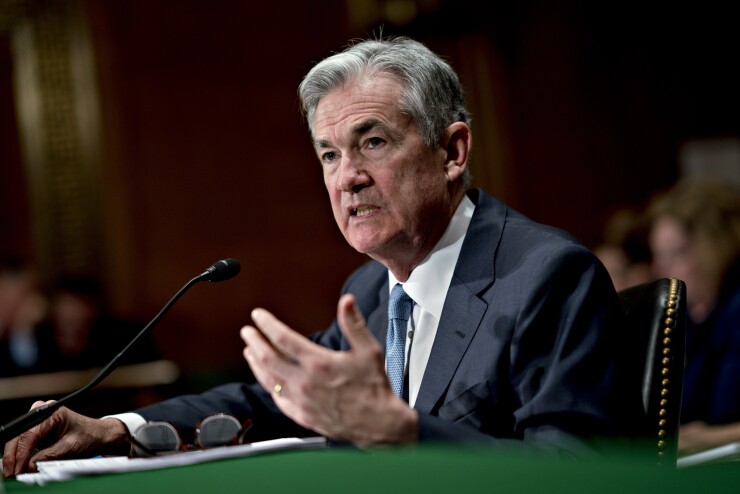Despite “significant uncertainty” in monetary policymaking, the Federal Open Market Committee continues to back gradual increases in the federal funds rate, Fed Chair Jerome Powell said Wednesday.

"The Committee has stated that we do not expect it will be appropriate to reduce the target range for the federal funds rate until we have gained greater confidence that inflation is moving sustainably toward 2%."
“As is often the case, in the current environment, significant uncertainty attends the process of making monetary policy,” Powell said at an ECB Forum in Portugal, according to prepared text released by the fed. “Today, with the economy strong and risks to the outlook balanced, the case for continued gradual increases in the federal funds rate remains strong and broadly supported among FOMC participants.”
The uncertainty relates to the tight labor market, which last occurred about 50 years ago, in a different world. There is little experience with low unemployment, which was under 4% from February 1966 through January 1970. “The U.S. economy has changed in many ways over the past 50 years,” Powell noted, making comparisons difficult.
“The lack of useful historical precedent leaves us with some uncertainty about the answers to several important and challenging questions,” he said. Included is uncertainty about the reliability of estimates of the natural rate of unemployment. “Natural rate estimates have always been uncertain, and may be even more so now as inflation has become less responsive to the unemployment rate. The anchoring of expectations is a welcome development and has likely played a role in flattening the Phillips curve. But a flatter Phillips curve makes it harder to assess whether movements in inflation reflect the cyclical position of the economy or other influences.”
And since calculating the natural rate of unemployment, Powell asked, what impact would running well below the natural rate for an extended time mean for inflation? “The flat Phillips curve suggests that the implications for inflation might not be large, although a very tight labor market could lead to larger, nonlinear effects. Research on this question is ambiguous, again reflecting the limited historical experience.”
Central banks have kept inflation expectations well anchored, he said. “If central banks were instead to try to exploit the nonresponsiveness of inflation to low unemployment and push resource utilization significantly and persistently past sustainable levels, the public might begin to question our commitment to low inflation, and expectations could come under upward pressure.”
Another uncertainty is whether a strong economy will lead to excesses that make the financial system vulnerable, especially since the two most recent U.S. recessions were caused mainly by “financial imbalances” rather than inflation.
“Today I see U.S. financial stability vulnerabilities as moderate and broadly in line with their long-run averages,” Powell said. “While some asset prices are high by historical standards, I do not see broad signs of excessive borrowing or leverage. In addition, banks have far greater levels of capital and liquidity than before the crisis.”
Another question is whether a strong economy offers “lasting benefits,” much as a tight labor market encourages more people to join the labor force. “All told, though, the persistence of any such ‘positive hysteresis’ benefits is uncertain, since, again, the historical evidence is sparse and inconclusive.”





